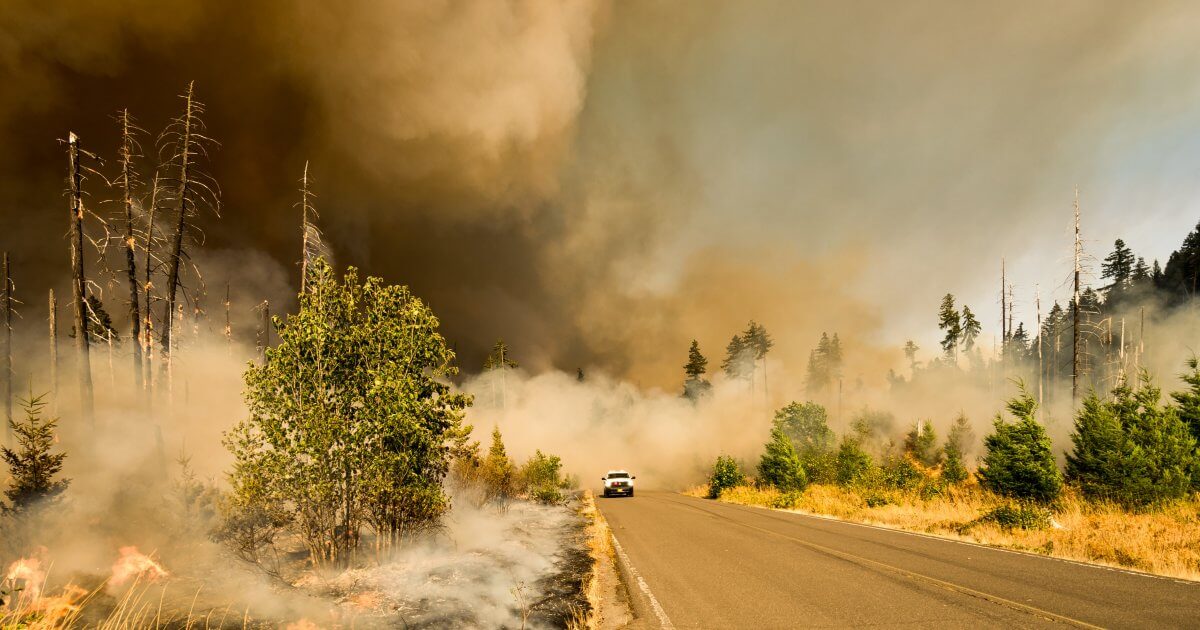Important Information About Wildfires and Cancer
- The best way to prevent dangerous exposure is to stay inside
- If you must go outside, wear a heavy-duty mask called a respirator, not a standard construction mask
- Consistent exposure to ash and debris from wildfires can pose some increased risk for cancer
As the “Red Flag Warning” remains in effect across much of California, immediate safety measures should take priority. California Governor Gavin Newsom has declared a state of emergency, and the California Department of Forestry and Fire Protection is urging residents in most of California to prepare for evacuations. "Have a plan and don't hesitate to evacuate," the Department advised over its official Twitter account.
Over the past weeks CA has been ravaged by intense & damaging wildfires. Right now, as a #RedFlagWarning is in effect across most of CA, it is especially important to be ready in case of an evacuation. Have a plan & don't hesitate to evacuate. #ReadySetGo https://t.co/XTlN0wGKx9 pic.twitter.com/SOl3zxvko6
Read MoreCAL FIRE (@CAL_FIRE) October 29, 2019 While the immediate safety measures are vital, it's important as well to address the long-term risks of consistent exposure to wildfire smoke, including heightened cancer risk.In 2018, several months after the deadly Tubbs Fire devastated the Napa and Sonoma regions in California, the Napa Country government put out a comprehensive report on the long-term health risks associated with wildfires. According to the report, it isn't the smoke itself that can increase cancer risk; it’s the ash and debris in the air after a variety of materials –some more hazardous than others–have burned in the wildfire’s path.
"Ash and debris are often more hazardous than wildfire smoke because they come from a variety of burned materials, such as appliances, vehicles, and home structures," the report reads. Some of the materials are known to be carcinogenic (cancer-causing) to humans, such as lead, cadmium, and arsenic.
RELATED: "We Were Told The Air Was Safe" The People At Risk for 9/11 Cancers
How Much Exposure Poses a Cancer Risk?
So far, most established links between the ash and debris and higher cancer risk have come from studies done in firefighters, who sustain contact with the debris for a longer period. Those studies have linked consistent wildfire exposure to lung cancer and multiple myeloma, as well as kidney cancer and colorectal cancer.
More research is needed to determine the cancer risks associated with temporary exposure. These studies are ongoing, but as one researcher told The Washington Times, the research is complicated, partially because there are so many different materials in the air that comprise the burning ash during and after a wildfire.
"[These wildfires] are different, they have different things in their mix," Rebecca Schmidt, an assistant professor in the Department of Public Health Sciences at the University of California, Davis, told The Washington Times. "There's particulate matter, but then there's all these other things, like, when a refrigerator melts and releases gasses and all the furniture and building materials and tar and all of these things being vaporized and put into the air."
How Can I Protect Myself From Wildfire Ash and Debris?
As researchers continue working to better define these risks, it's important to take steps to protect your health. In addition to cancer risks, polluted air has been linked to heart disease, COPD, and other respiratory conditions. The U.S. Centers for Disease Control and Prevention (CDC) recommends taking the following steps to decrease your risk from wildfire smoke:
- Do not rely on common paper dust masks (the ones that look like surgical masks) for protection. According to the CDC, these common, lighter-weight masks are designed to trap larger particles (from sawdust, for example), but won't do much when it comes to trapping the smaller particles found in wildfire smoke. The Environmental Protection Agency (EPA) advises wearing a heavy-duty mask called a respirator if you must go outside for an extended period of time. These masks cover more of your face and have two straps that go around your head instead of one.
- If you've been advised to stay inside, keep your windows and doors closed, and run an air conditioner (but with the fresh air intake closed). Keep the conditioner's filter clean. (Of note, if you don't have an air conditioner and it's too warm to stay inside, the CDC advises seeking shelter in a designated evacuation center).
- Avoid candles, fires in your fireplace, or gas stoves. All of these can further increase pollution.
- Try not to vacuum; this stirs up particles that are already inside your home.
- If you already have asthma or another lung disease, talk to your doctor about specific medications and whether you should evacuate.
Learn more about SurvivorNet's rigorous medical review process.

